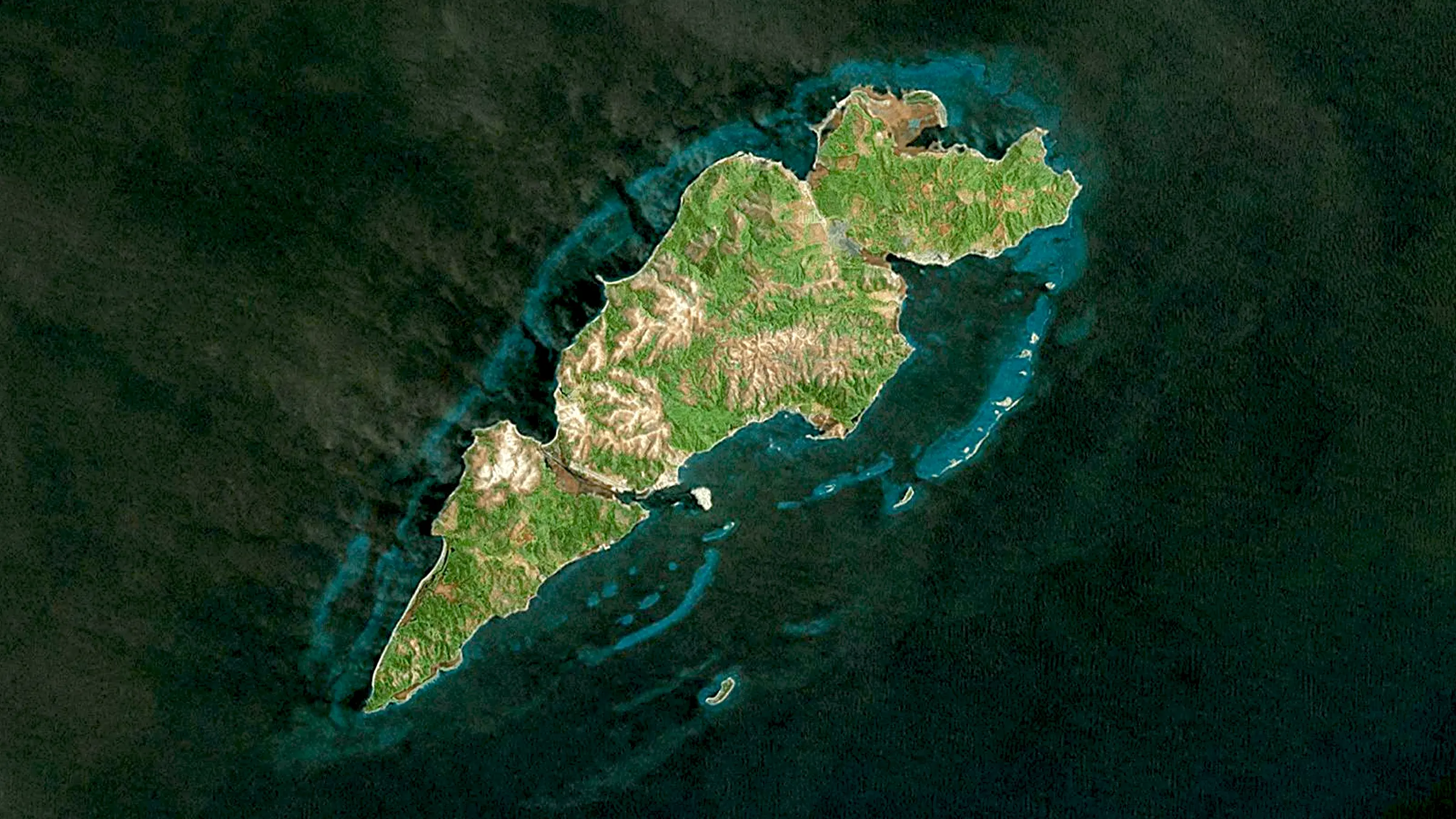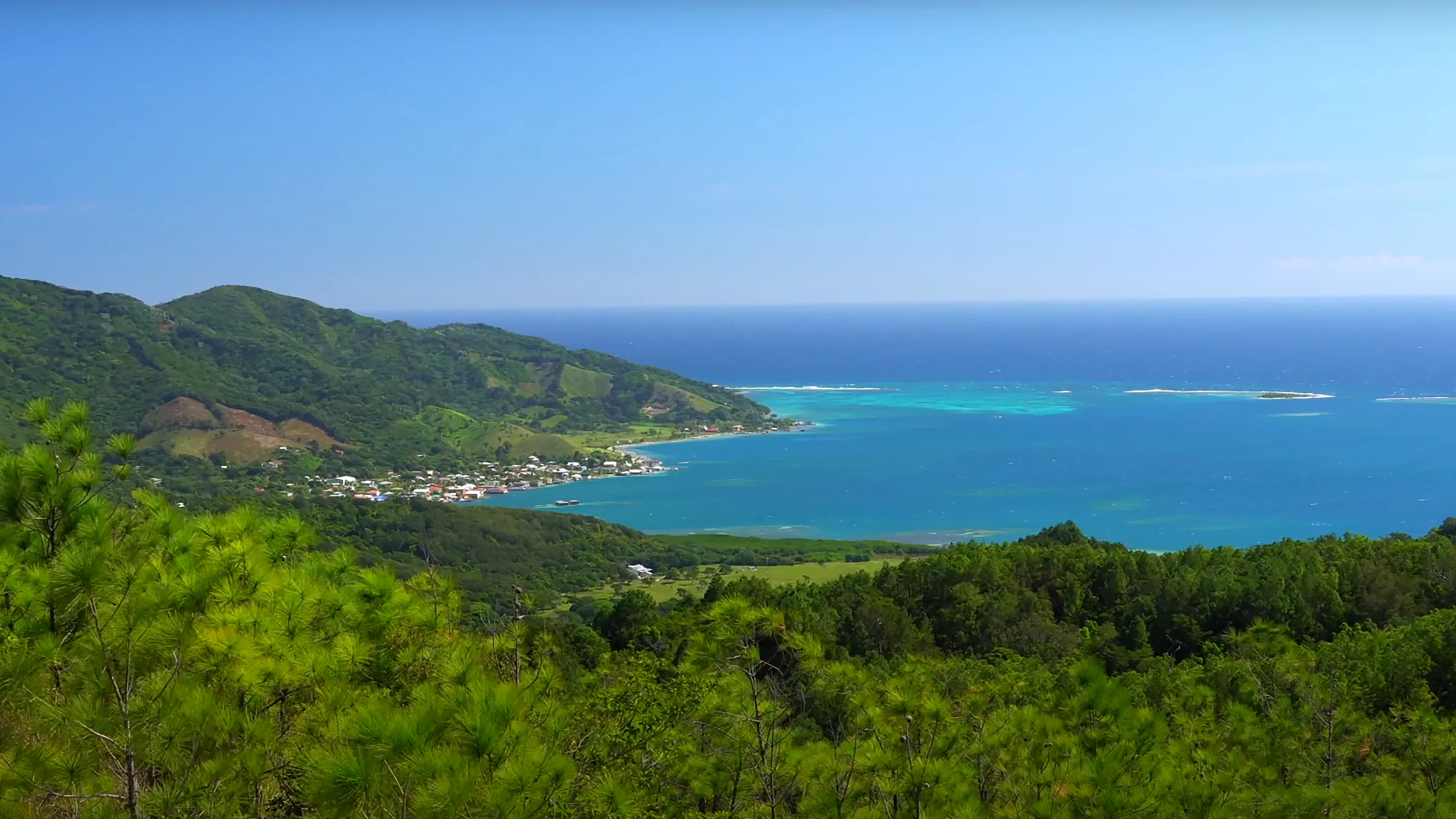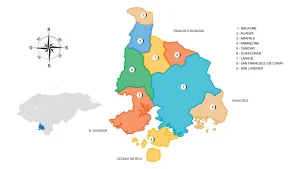Municipality of Guanaja

The municipality of Guanaja is one of the islands that belongs to the Department of Islas de la Bahía.
It is one of the three islands that make up the archipelago of the Bay Islands Department, in the Caribbean of the Republic of Honduras. It has been described as the Venice of Honduras because of the waterways that run through it.
One of the Guanaja keys is also called Guanaja or Bonacca, or simply El Cayo. The main town is called Lower Cays, an abbreviation of the English The Cay or El Cayo. The other two main settlements on the island are Mangrove Bight and Savannah Bight. There are also other smaller towns: they include East End and North East Bight.

General data
- Mayor: Spurgeon Steven Miller Molina (Liberal Party – 2021 Elections)
- Territorial area: 50.10 km2
- Geographic Identification Code: 1102
- Population: 5,739 inhabitants (INE 2018 data)
- Creation date: August 25, 1887
- Villages and hamlets: 4 villages and 46 hamlets (INE 2013 data)
- Altitude: 415 meters above sea level
- Employer fair: from May 8 to 23, San Isidro day.
Historical facts
It was originally baptized by Columbus in 1502, with the name of Isla de Los Pinos at Playa Soldado on the north side of the island. In the 1582 report, it appears as a town of Trujillo Indians entrusted to the Spanish crown with forty tributaries. In the Vallejo yearbook of 1889 it already appears as a municipality, a category that was given to it on August 25, 1887.
In 1887, The Island, along with the South West Cays, Graham’s Place on the Cay, Shane’s, Hog, Pond, Flower Pot, Catherinne, Halfmoon, Channel, Crown, Clark, Stuart, Josh, Hendricks, George, and North East, form the municipality by government decree, as part of the Department of Islas de la Bahía.
It was inhabited by the Pesh ethnic group in pre-Hispanic times and in 1502, Christopher Columbus arrived on the island. During colonial times it was called Bacaina.
In recent years, inhabitants of the Cayman Islands settled in the Bay Islands, which explains the spread of the English language in addition to Spanish.
In 1998 (October), most of the buildings and houses on the island were affected by Hurricane Mitch. The islanders in the same month fixed the damage. It is an island very visited by tourists.
On October 2, 2021, a dawn fire raged out of control and swept across the island, engulfing some 200 structures. The Honduran army was called in to help with the rescue, pouring water on the flames and extinguishing them. There were no casualties.
Origin of your Name
Guanaja is the native name, however Christopher Columbus called it Isla de los Pinos because of the abundance of this tree in the area.
Location
It is located approximately 70 km north of the coast of Honduras, and 12 km from the island of Roatán, on a coral reef, surrounded by the Porcales mountain.
Limits
- North: Atlantic Ocean;
- South: Atlantic Ocean;
- East: municipality of Jose Santos Guardiola;
- West: Atlantic Ocean.
Economic activity
The island is a point of tourism with activities such as beaches, birdwatching, geotourism and celebrations.
- Cultivation of basic grains, sugar cane, coconut, banana, pineapple, cassava, coffee
- Breeding of cattle, horses and pigs
- Poultry farming through shrimp companies
Tourism
- Coral Reef: It is an island much visited by divers for its warm and crystal clear waters that support part of the second largest coral reef in the world that is located around the entire Guanaja Island.
- Biodiversity: It is also visited by nature lovers, biologists who want to know the biodiversity on the island, trees and other plants, and animals.
- Waterfalls: Guanaja is considered the mountain with the most waterfalls in Honduras, as it has more than 10 waterfalls.
- Celebrations: The people of Guanaja also have a different culture, so it is worth highlighting each important date in the year; for example, September 15 (independence from Honduras), October 31 ( Halloween ), December 25 (Christmas) etc. What they call Old Junk or Junkanoo (old trash) is about a group of people in masks wearing old rags clothing even up to palm trees on top and running through the streets of El Cayo or The Key they consider it something very funny for being part of their culture and something that has been done for years.
Transportation
The most common means of transportation are boats and launches, a local channel known as The Cut (the cut) allows access from the south to the north of the island without having to go around it.
Guanaja is served by the Guanaja Airport (GJA), planes travel to and from the La Ceiba airport. One road exists, from Mangrove Bight to Savannah Bight since 2006, with little car traffic.




